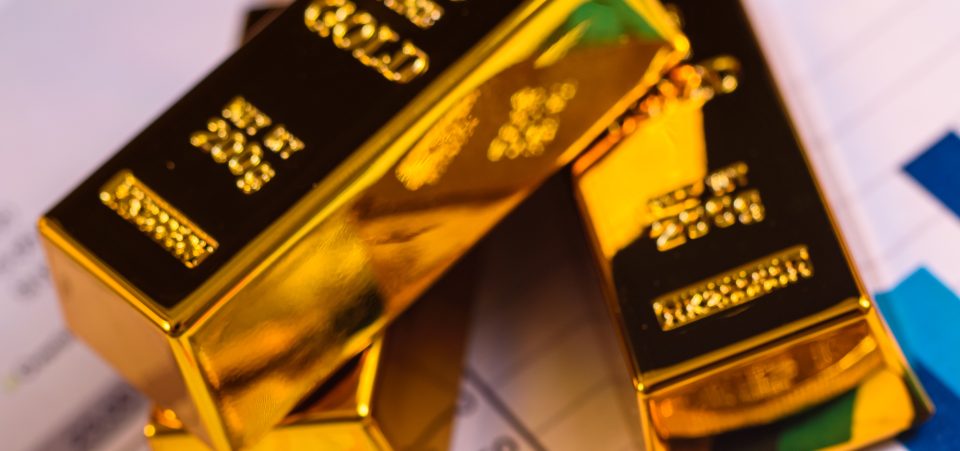Central Banks’ Gold-Buying Doubled in 2nd Quarter of 2022
If you’re an avid gold market follower, it’s important to pay attention to what central banks do. Recently, they’ve been loading up on the yellow precious metal, which could take gold prices much higher. As long as central banks remain in the gold market, don’t rule out the possibility of $3,000/ounce gold.
You know what’s comical? You’ll hear all sorts of stories in the mainstream media about what central banks could do. You’ll hear analysts tell us why interest rates should go higher—or why they shouldn’t. Or how much money central banks should print. And a lot more stories like that.
On the other hand, you’ll rarely hear from the mainstream media about central banks loading up on gold. It’s astonishing what central banks have been doing lately. In fact, three of the most certain things about central banks are: they like gold, they are buying gold, and they will continue to buy gold.
Why do central banks want to buy gold? There’s a very simple reason: gold is one of those assets that, over the long term, doesn’t really have a high correlation with other assets. Therefore, it keeps bank reserves anchored.
In the second quarter of 2022, central banks purchased 180 tonnes of gold. Compared to the first quarter of 2022, their gold buying doubled! (Source: “Gold Demand Trends Q2 2022,” Goldhub, July 28, 2022.)
In the first half of 2022, central banks’ gold purchases amounted to 270 tonnes. Over the past five years, the average gold purchases by central banks in the first half of the year amounted to 266 tonnes. This year, their gold buying was slightly above average.
Mind you, in 2020, central banks purchased about 255 tonnes of gold. This was the lowest annual amount they purchased in a decade. However, during that year, they had many problems to deal with. In 2021, central banks purchased over 463 tonnes of gold. That should give you an idea of how much they are in need of gold.
Which central banks have been buying gold?
It hasn’t been the U.S. Federal Reserve or other major central banks like the European Central Bank (ECB). The big central banks already have a lot of gold. It’s the smaller ones that have ramped up their gold purchases.
In the second quarter of 2022, the Central bank of Iraq was one the biggest gold buyers. The central banks of Argentina, Ecuador, Egypt, India, Ireland, Poland, Serbia, and Turkey have also been active gold buyers so far this year.
Moreover, there have been interesting developments in some gold-producing countries. For example, in June of this year, the Central Bank of Bolivia proposed a law that would make it the sole buyer of domestically produced gold.
Another point worth mentioning: the recently appointed governor of the Czech National Bank, Aleš Michl, proposed that the bank’s gold reserves increase from 11 to 100 tonnes or more. Why? To increase the returns of the official reserve. It’s good for diversification and doesn’t have a correlation with the stock market.
Gold Prices Setting Up for Giant Reward
Dear reader, I look at what central banks have been doing recently and I can’t help but be bullish on gold. As I said earlier, central banks continue to make the case for higher gold prices much stronger. I see central banks buying gold as one of the biggest factors sending the price of gold toward $3,000 an ounce.
Remember, central banks buy gold to keep the volatility of their reserves to a minimum. Their reserves mainly consist of fiat currencies—and have you looked at the currency market recently? It’s volatile, to say the least. We have the euro hitting parity with the U.S. dollar, the Japanese yen at a multi-year low, and the currencies of emerging economies plummeting. I wouldn’t be surprised if this motivates central banks to buy even more gold to hedge their reserves. If that’s the case, it could be great for those who already own gold.
Let me also make this very clear: if you’re hoping for announcements from central banks of when and how they’ll buy gold, you’ll likely be disappointed. If they did that, they would risk moving gold prices higher before they could buy more of the precious metal. Therefore, they will likely do it quietly. It’s important to pay attention to the banks’ actions; they speak louder than words.
How realistic is a $3,000/ounce gold price target? I think it’s very realistic, but don’t assume it will happen in an instant. There will likely be a slow, gradual, and stable move instead of an erratic spike.
So, where’s the opportunity for investors?
Gold bullion could be the purest play on higher gold prices, but investors shouldn’t overlook mining stocks; they could provide leveraged returns. Over the past few months, miners have faced a lot of scrutiny from investors, but those with low production costs, excellent properties, and solid balance sheets could present great opportunities.






